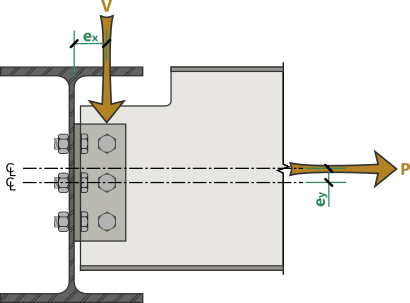CalebA
Structural
- Apr 3, 2023
- 21
I am designing a double angle connection between a floorbeam and a girder web on a bridge. The floorbeam is coped, has a 6.5" eccentricity to 15 bolts 3/4" A992 bolts spaced at 3", and has a load of 308 kips at the girder. I am having some trouble coming up with the required strength, T. Can I extrapolate T from the moment created by the eccentric point load? Would I even need to account for the prying action in this case?

